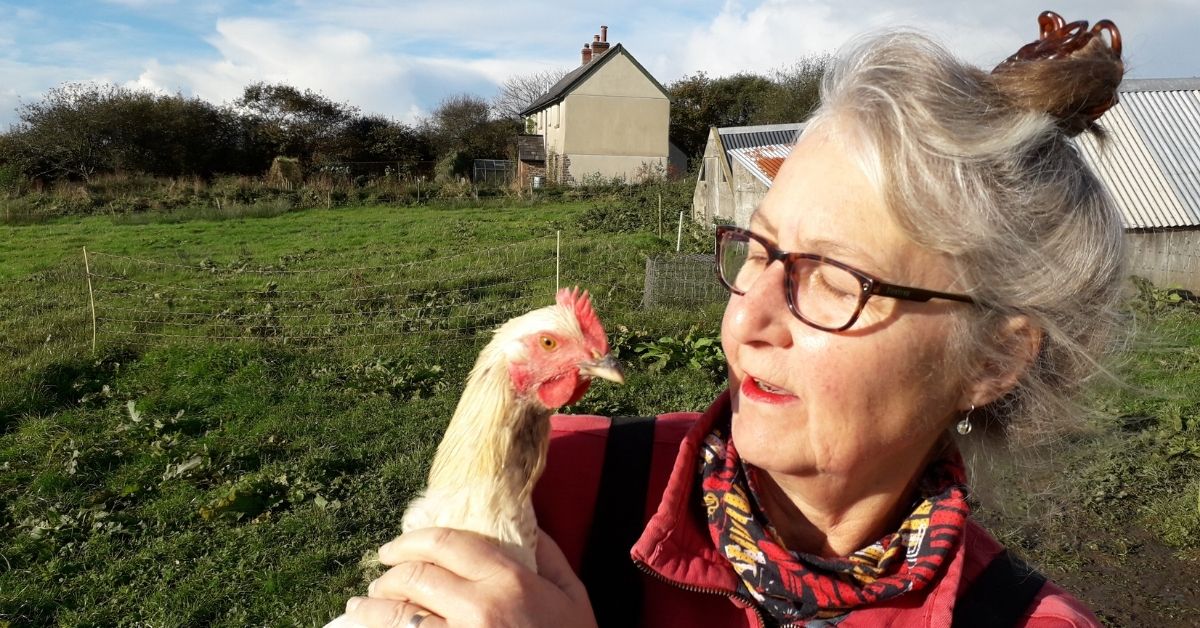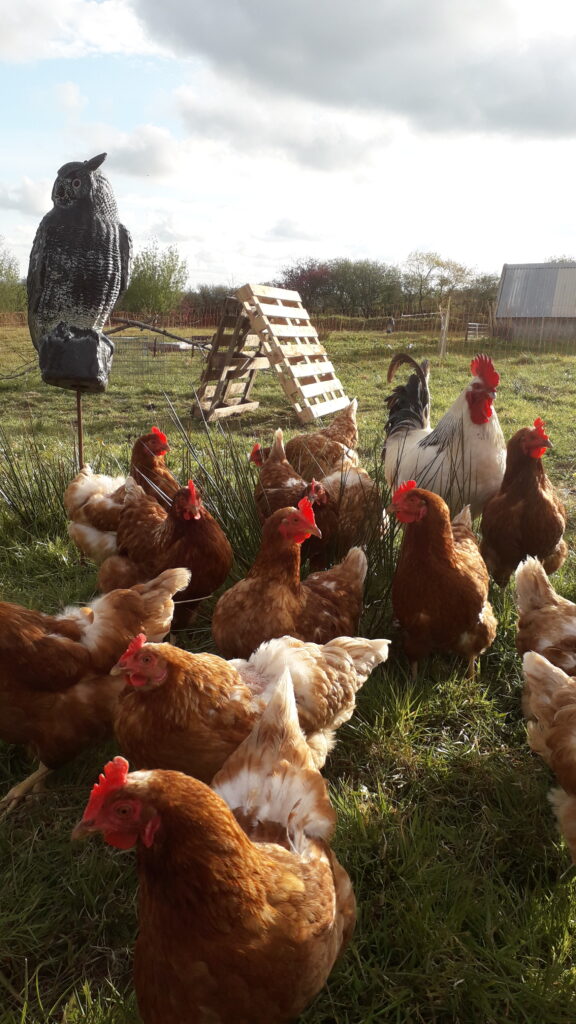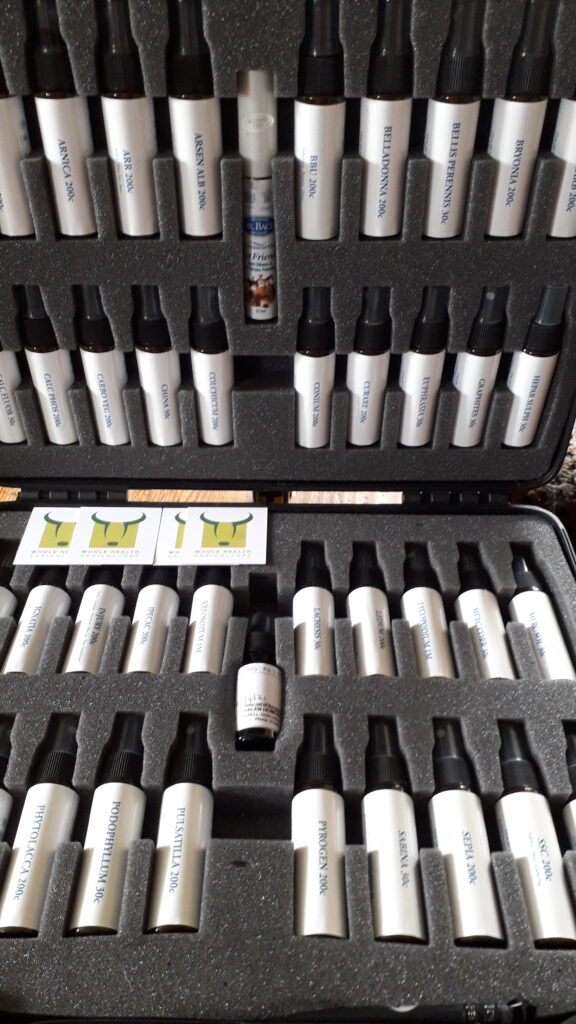‘Just in Case’ Vs ‘Wait and See’ - A Budding CHA’s View

Whole Health Agriculture (WHAg) is currently running a pilot project training a select number of Complementary Health Advisors (CHA’s). Each CHA is being trained to support farmers who wish to implement a homeopathy-focused health plan on their farms, aiming to prevent problems arising from stress, ongoing problems and livestock susceptibility. They are currently working with their ‘guinea pig’ farmers to establish a year-based plan for their farm, covering all the practicalities and setting them up for success. One of our trainee CHA’s, Pammy Riggs, gives us a personal insight into the value of this programme.
I came to WHAg via my own farming work
Myself and my husband entered organic farming as neophytes, no preconceptions, little knowledge but intense drive and determination and although we had both ‘messed around’ on farms as children we had to make it up as we went along which we did quite successfully. A short course in homeopathy and learning about nosodes was probably what kept the whole farm afloat at times, especially since our own chosen piece of wet Devon land came to us poached, rutted with ground-in silage plastic, over-grazed, over-chemicalised and wearily, a breeding ground for Coccidiosis which subsequently reared its ugly head in our sheep, pigs and then chickens.
The Cocci nosode was our saving grace and we put our total trust in it. With 2ltr plastic bottles stationed near the animal troughs and our eyesight on ‘high alert’ for the faintest sight of blood in poo, at the sight of which we would immediately dose the trough with Cocci nosode, bed-up well to cover any red poo and 100% of the time the problem went no further. There can be no better recommendation for something than having seen it work for your own precious stock. Interestingly, over the years, and as our rotation of chickens, pigs, sheep and cattle kicked in and no chemicals were given to land or beast, the problem of Cocci melted away.
Here is one very good reason for being proud to be in the first cohort of Complementary Health Advisors (or CHAs) being trained up by Whole Health Ag.to deliver progressive preventative health strategies. If my Cocci nosode experience is all I ever share with a fellow farmer then I will have helped them enormously but better still my CHA training has given me loads and loads to share.

Invaluable knowledge for a budding CHA
My long years of using homeopathy within the family and on the farm stemmed from a short course organised with a homeopath in Dorset in 1988 in preparation for the goal of becoming an organic farmer (and because one child was particularly scabby at the time and the doctors had no reasonable solution except steroids, not appropriate for a five year old in my book). Many years and a drawer full of homeopathic remedies and lots of practical working experience later I hadn’t particularly widened my knowledge of homeopathy.
So what has this amazing WHAg Complementary Health Advisor course done for me? Organised, formalised, categorised and expanded my homeopathic knowledge whilst dovetailing it neatly into everything I already knew about caring for animals and the whole farming year in general.
I love looking after animals, I have done it all my life – there is a really special thing about using homeopathy within the farming year, it applies to beef, dairy, pig, sheep, goats and poultry (camelids are off my personal agenda for now at least). I didn’t know at the time that if I had dosed those troughs with my Cocci nosode anyway, without waiting for the red poo to alert me, I most likely could have avoided any cases of Coccidiosis at all, something I now call Proactive Prevention – or ‘Just in Case’.
Here is where I explain the title of this blog........ ‘Just in Case’ Versus ‘Wait and See’
Modern veterinary practice is always the first port of call for emergencies, and offers lots of technical advances in the form of scans, genetic tips and tricks but there is an area that it doesn’t quite cover and that’s getting ahead of the problem. Yes, it is up to the farmer to put their best husbandry in place and that will keep some potential problems at bay, but as we all know, farming has its stresses, animals have their susceptibilities, just as we do, and groups and individuals do get sick.
My work means that I am deeply involved with large dairy farms. However, now that I am armed with my new CHA knowledge, my view from the milking pit is about stemming the difficult ‘might happen’ problems: BVD, Johne’s, neosporin etc… With regular water-trough doses of appropriate nosodes ‘just in case’, the kind that worked with our Cocci problem, there can be a ‘flattening of the curve’ aspect to these challenges. I also see such a huge potential for a different kind of stemming.
Think of a routine farm event with the potential for infection; castration, dis-budding, birth, drying off. With a ‘wait and see’ approach, it might get better, it might need ‘tubing’ or it may eventually need emergency veterinary intervention. With a CHA on board to chat these scenarios through, there could be another approach. Get in there quickly before the event. Homeopathy has the tool kit, non toxic, no withdrawal and there is a high chance of reducing the use of those tubes on the farm. Phew! Saves money, keeps the milk in the tank and minimises the concern over antimicrobial resistance (AMR), for just a few benefits.


Early days, but evidence is positive
It is early days yet but my pilot farmer has told me it is not just about the practical benefit of reminders of what is possible. He is certain that being reminded to trough treat his cows with belladonna over the hottest summer days he mitigated sunstroke problems. One cow stood out from the crowd and looked ‘floppy’ (his term), she received a personal top up dose of belladonna and pulled through with no further incident. For him, it is the emotional benefit of having somebody to discuss this different approach. He had already done a short course on farm homeopathy, our CHA discussions, tick box exercises and mini questionnaires are good reminders of what he learnt. Springing from our discussion the farmer now has a set of ‘weather remedies’ in the calf shed with instructions for whoever makes up milk for the calves bringing the staff into the homeopathic loop too.
I am still waiting for the definitive proof that will be delivered via the farm data collected on cell counts, milk yield etc. But anecdotal evidence says things are heading in the right direction. We have yet to explore all the options for nosodes on this farm but I’m sure that with a bit of forward planning, or Proactive Prevention the equivalent of the Cocci nosode experience can be rolled out here too.
Pammy
As well as our CHA programme, we have a new Learning Centre coming soon. Keep in touch and sign up for the latest news.

About the author: I’m Pammy, a farmer of many years who teachers courses, and writes about farming, animals, and much more!
